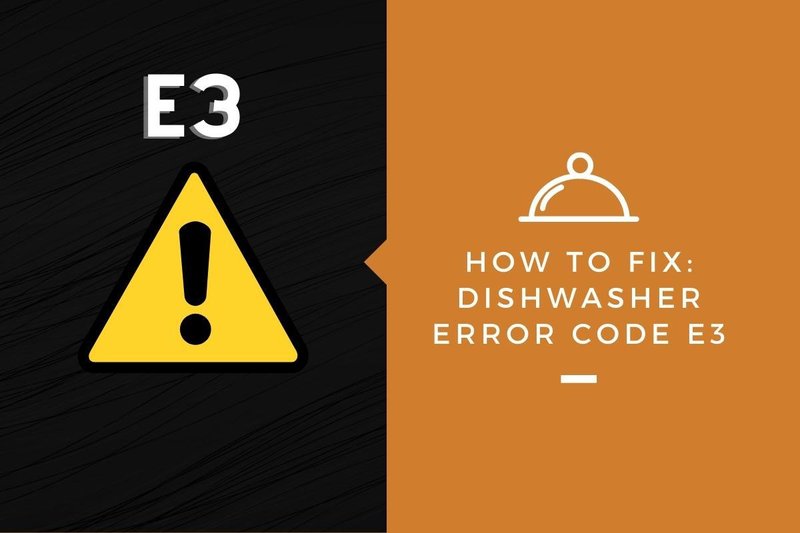
Understanding dishwasher error codes can feel like deciphering a secret language. These codes are your appliance’s way of telling you that something’s not quite right. In the case of Error Code E3, it’s related to a heating problem, which means your dishwasher isn’t warming up the water properly. Just like you wouldn’t enjoy a cold shower, your dishes won’t get truly clean without hot water. So, what should you do when you see this particular error code?
What Does Error Code E3 Really Mean?
When your Whirlpool dishwasher displays Error Code E3, it’s signalling a heating issue. Imagine it like your car’s check engine light—it’s an alert that something needs attention but doesn’t specify exactly what. In dishwashers, hot water is crucial for breaking down food particles and ensuring your dishes come out sparkling. If the water isn’t heated correctly, you’ll end with less-than-satisfactory results.
The E3 error typically indicates that the water isn’t reaching the correct temperature within a specified time. This could be due to several factors. Maybe the heating element is defective, like a broken kettle that won’t boil water. Or perhaps the thermostat that’s supposed to monitor the water temperature isn’t working, akin to a broken thermometer not showing a fever. Another possibility could be an issue with the control board that manages the entire operation.
Understanding these possibilities can feel overwhelming, especially if you’re not technically inclined. But knowing when to call a technician can save you time and prevent further damage. Let’s explore the potential causes in more detail to figure out when professional help is necessary.
Identifying the Root Causes of Error Code E3
Identifying the exact cause of the E3 error can sometimes feel like detective work. The most common culprits usually involve the heating element, the thermostat, or the control board. Think of the heating element as the heart of the operation—it warms the water, making it effective at cleaning. If this part is faulty, it’s like expecting a pot of water on a stovetop to boil without turning the burner on.
Next, there’s the thermostat. This component monitors the temperature and sends a signal when the desired heat level is reached. If it’s malfunctioning, it’s like trying to bake cookies without knowing the oven’s temperature; you’re just guessing and hoping for the best. A faulty thermostat can lead to water not being heated correctly, triggering the E3 error.
Lastly, the control board acts like the brain of your dishwasher. It orchestrates all functions, ensuring everything runs smoothly. If it’s on the fritz, nothing operates as it should. It’s like trying to have a concert with an offbeat conductor—chaos ensues. When the control board is the problem, it often requires a technician’s expertise to diagnose and repair.
When to Call a Technician
So, when should you wave the white flag and call in a professional? If you’re not comfortable working with electrical components or if you’ve tried basic troubleshooting steps with no success, it’s time to enlist a technician. Attempting to fix the heating element or control board on your own without the right skills can lead to more damage or even safety hazards.
Moreover, if you’ve identified that the heating element or thermostat is not working, these parts often require specialized tools and expertise to replace. A technician can quickly determine the malfunction and offer solutions, saving you time and hassle.
Calling a professional can seem like a daunting step at first, but it’s often the safest and most effective way to restore your dishwasher to its proper functioning state. Plus, a reliable technician can provide tips on how to prevent future issues, allowing you to enjoy peace of mind.
Preventative Measures and Next Steps
While dealing with dishwasher errors can be frustrating, there are steps you can take to minimize future occurrences. Regular maintenance is key. Just like you’d service your car, your dishwasher benefits from occasional attention. Make sure the filters are clean, and routinely check for blockages that might prevent proper water flow or drainage.
Consider using a dishwasher cleaner monthly to remove build-up that can lead to performance issues. Also, double-check that your dishwasher is loading correctly. Overcrowding can prevent items from being cleaned properly, and it might confuse the dishwasher’s sensors, leading to error messages.
If you’ve already needed a technician, ask them for specific tips on maintaining your particular model. They might recommend specific practices or products that cater to the unique aspects of your machine’s design. Taking these extra steps will not only keep your dishwasher in top working condition but also extend its life span, providing you with reliable service for years to come.
In summary, Error Code E3 in your Whirlpool dishwasher means it’s time to check the heating functions. Whether it’s calling for professional help or taking preventative measures, addressing the issue promptly can keep your appliance running smoothly, ensuring every cycle ends with dishes that are squeaky clean.